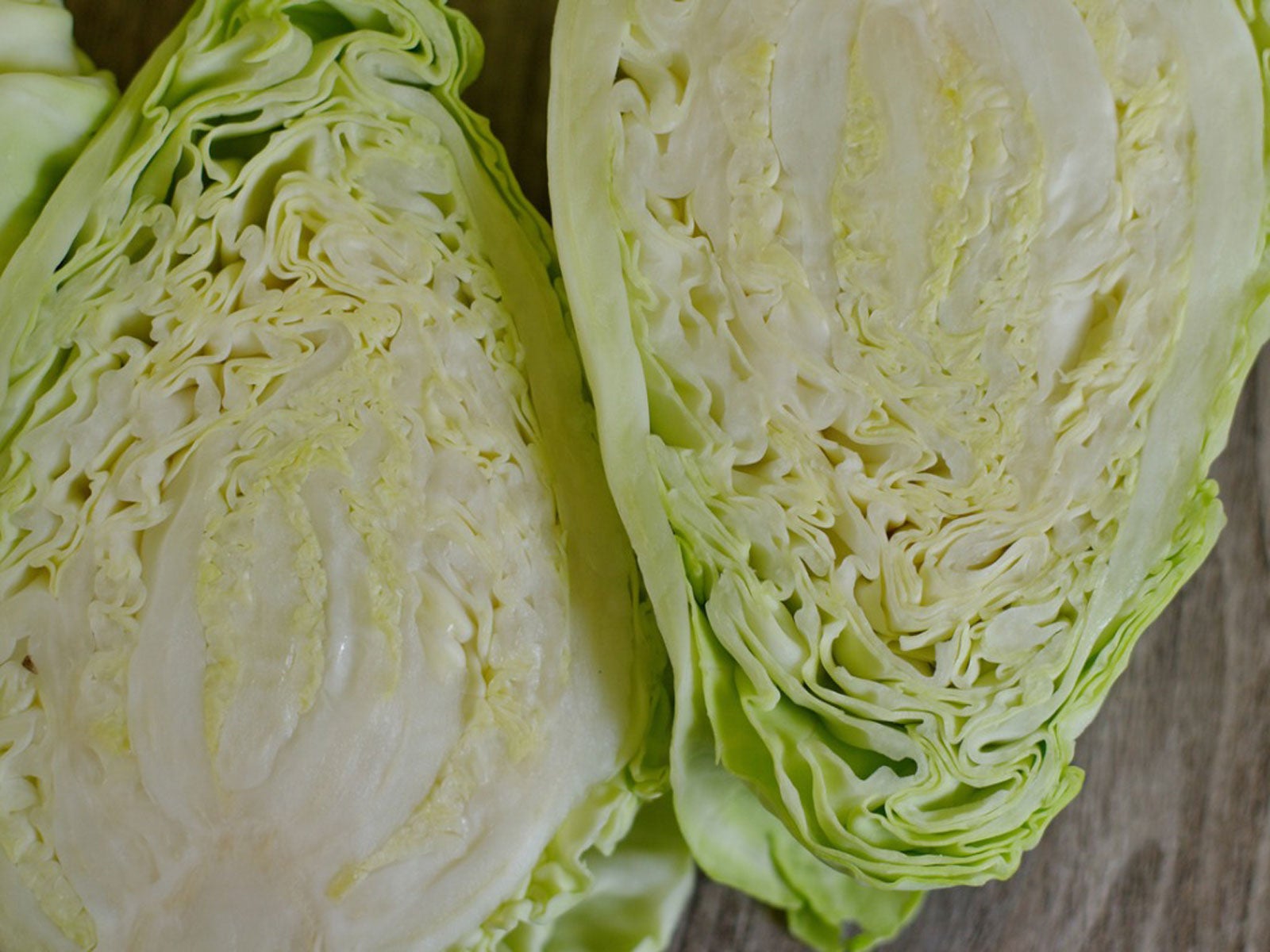Murdoc Cabbage Variety: Learn About Murdoc Cabbage Care


If you like the texture and flavor of Caraflex cabbage and wish there were more of it, consider growing Murdoc cabbages. The Murdoc cabbage variety has the same tender leaves and sweet taste that home cooks value for slaw, stir fries, and sauerkraut recipes. The difference is the size of the heads. Instead of 1 to 2 pounds (0.5-1 kg.) of petite sized Caraflex heads, Murdoc averages a whopping 7 to 8 pounds (3-4 kg.).
F1 Hybrid Murdoc Cabbage Variety
Murdoc matures in approximately 60 to 80 days, producing a cone shaped head that has a sweeter flavor than round cabbage varieties. The heads have heart-shaped centers and the thinner leaves give it a silky texture that's perfect for a variety of fresh or lightly sautéed cabbage dishes.
Additionally, this cabbage variety is a key ingredient in many Bavarian weisskraut recipes. This braised cabbage dish has a sweet and sour flavor that's milder and easier to make than traditional sauerkraut recipes.
Murdoc is primarily grown for fall harvest. When mature, the tight outer leaves will begin to fold back indicating the cabbage is ready for picking. When harvested before frost, Murdoc has excellent storage potential. This conical cabbage often lasts 30 to 60 days when stored at a temperature of 32 degrees F. (0 C.).
Growing Murdoc Cabbages
For a fall crop, start cabbage seeds indoors six weeks before the last frost. To directly seed into the garden, plant Murdoc seeds when the soil temperature has reached a minimum of 50 degrees F. (10 C.). The ideal germination temperature for Murdoc cabbage seeds is 75 degrees F. (24 C.).
Thin or space transplants 24 inches (61 cm.) apart. Pack soil firmly around transplants and mulch to retain soil moisture levels and reduce weeding. Due to their shallow roots cabbage plants don't tolerate close cultivation to remove weeds.
Murdoc cabbage care is similar to other types of Brassicaceae. Like most cabbage, Murdoc is a heavy feeder and benefits from a high nitrogen fertilizer early in the season. Withhold fertilizer as the heads begin to mature to prevent splitting. Keeping soil consistently moist will also help keep cabbage heads intact.
Gardening tips, videos, info and more delivered right to your inbox!
Sign up for the Gardening Know How newsletter today and receive a free copy of our e-book "How to Grow Delicious Tomatoes".
The Murdoc variety hosts the same pest and disease issues as most other cabbage cultivars. The more common pests include cabbage loopers, flea beetles, and root maggots. To reduce disease, rotate crops each year, use clean potting soil, and clean off the garden at the end of the season to prevent diseases and pests from overwintering in the soil.
Murdoc cabbage seeds are readily available from online seed catalogs and retailers. Both seeds and seedlings can be purchased at local gardening centers.

Laura Miller has been gardening all her life. Holding a degree in Biology, Nutrition, and Agriculture, Laura's area of expertise is vegetables, herbs, and all things edible. She lives in Ohio.
-
 Never Plant Seedlings Until They Pass These 3 Simple Tests
Never Plant Seedlings Until They Pass These 3 Simple TestsDon't be over-eager to transplant seedlings into the garden before they are ready. These quick and easy checks will help ensure flourishing plants.
By Mary Ellen Ellis
-
 Grow ‘Karl Rosenfield’ Peony Plants For The Ultimate Frilly Border Beauties And Cut Flowers
Grow ‘Karl Rosenfield’ Peony Plants For The Ultimate Frilly Border Beauties And Cut FlowersFor frilly double magenta peony petals infused with a heady fragrance, grow ‘Karl Rosenfield’ peony plants. Here’s how to cultivate the ultimate plushy blooms
By Tonya Barnett